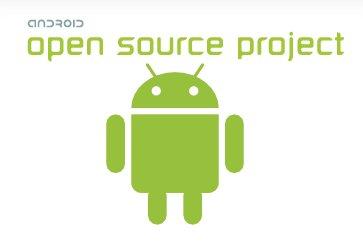 “Openness” is not a term that jumps to mind when describing the Chinese government. Yet on Sunday when Chinese regulators approved Google’s acquisition of Motorola Mobility, they applied a surprising caveat: Google must keep Android free and open source for the next five years.
“Openness” is not a term that jumps to mind when describing the Chinese government. Yet on Sunday when Chinese regulators approved Google’s acquisition of Motorola Mobility, they applied a surprising caveat: Google must keep Android free and open source for the next five years.
The approval lifted the last obstacle to the $12.5 billion merger and is resulting today in the completed Google/Motorola deal. As part of the announcement and as anticipated, Larry Page is naming Dennis Woodside as Motorola’s CEO.
China’s demand for openness is an ironic sequel to the 2010 disagreement with Google over another openness issue: Internet search. In 2010, Google refused to let China filter its search results, and was forced to retreat from the Chinese search market, leaving the homegrown, filter-friendly Baidu as the dominant leader. The rift may have led China to delay its verdict until several months after U.S. and EU regulatory bodies announced their restriction-free approvals in February.
While China’s demands mean OEMs and developers can breathe a little easier about Android’s future, few expected Google would soon discard its successful open-source strategy. Google has repeatedly vowed to keep Android open, to provide timely updates to all Android vendors without favoring Motorola Mobility, and to maintain Motorola as a separate, independent company.
Some speculate that Google may even spin off Motorola once it has plundered the U.S.-based Android device manufacturer’s 17,000-plus technology patents. The patents, which should help Google fend off Android-related legal attacks, were widely seen as the main goal of the acquisition. Google will likely keep Motorola, however, as a means to project its own vision of Android devices, free from UI skins and bloatware. In addition, Motorola’s set-top box division could help revive Google TV.
Google’s five-vendor Nexus strategy
Google’s open source commitment was far from a given. Some analysts advised the company to go proprietary as a way to eliminate fragmentation and better compete with Apple. In August, Piper Jaffray projected Google could earn $10.5 billion in profits by 2015 following the proprietary path.
Others suggested Google might pursue a middle ground by giving Motorola a head-start with new Android code before releasing code to others. Google has always denied the possibility, however, and China’s approval would appear to prohibit this. In fact, a May 15 Wall Street Journal article claims that Google will debut the upcoming Android “Jelly Bean” release in November on unlocked devices from up to five manufacturers.
Previously, Google had released such Google-branded “Nexus” devices with only a single partner. HTC built the original Android phone and first “Nexus” phone, and Samsung built the next two Nexus models. Last year, Motorola’s Xoom acted as an unofficial showcase model for Android 3.0 “Honeycomb” tablets.
According to the Journal’s unnamed source, Google will once again attempt direct sales with the devices, as it did with the HTC Nexus One in 2010. Although participating Android vendors won’t likely be permitted to add UI layers, they will enjoy early access to the latest code.
Presumably, Samsung, HTC, and Google’s other major Android partners have been given a shot at a Nexus device, in addition to Motorola. Asustek has also been rumored to be working on a co-branded tablet with Google. China’s Huawei or ZTE, both of which are rapidly building Android market share, may well share in the Jelly Bean debut, according to the story.
Mobile carriers, on the other hand, will likely be miffed, as the unlocked phones and tablets will work on multiple networks. The carriers can only hope that Google will fail to learn the lessons from its unsuccessful direct-sales scheme with the Nexus One.
Unlocked bootloaders aside, an open source Android is arguably as much in the interests of the carriers as it is with Android vendors, developers, and consumers. Google no doubt realized that a proprietary “Googarola” would further fragment rather than coalesce Android, and that the company might struggle to compete with Apple in its own proprietary hardware game.
FOSS purists would say Android isn’t really open source at all, especially due to Google’s lack of transparent governance. Yet, the company has finally stepped up its contribution of Android code back to the Linux mainline. More importantly, after protests about its nine-month hold-out on releasing Honeycomb code in 2011, it promptly released Android 4.0 code in November, along with the Honeycomb code.
Pure FOSS or not, Android is open enough to inspire a growing number of open source projects. According to a May 15 Black Duck Software study, 76 percent of the roughly 10,000 new open source mobile open source projects launched in 2011 were based on Android. In other words, Android is beginning to achieve enough open source momentum to ensure that no organization — including Google, Amazon, Samsung, Verizon, AT&T, or even China — will be able to fully control it.


